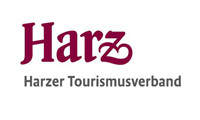At the start of your hike, we recommend a visit to the TorfHaus National Park Visitor Center. Here you will learn a lot about the region and the Harz National Park. A tour through the exhibition shows you what to expect on your route to the Brocken and prepares you for the unique landscape.
Johann Wolfgang Goethe also set out on his first ascent of the Brocken on December 10, 1777, accompanied by the forest ranger Degen from Torfhaus. The hike through rough terrain in deep snow left a lasting impression on the poet. The exact route Goethe took at that time can no longer be accurately reconstructed today. Today the path begins at the TorfHaus National Park Visitor Center, passes the National Park monument, leads down the sledding slope, and then runs below the Schubenstein to the Kaiser Way. We follow this to the right, then after about 1.5 km turn left towards the Brocken.
After another short climb, we reach the Quitschenberg, where many rowan trees (known as “Quitschen” in Goethe's time) once grew. The dead spruces you can see here were killed by a bark beetle called the spruce bark beetle. It is a natural inhabitant of our forests. However, if it appears in large numbers, it can kill spruces weakened by environmental influences in a short time. At Quitschenberg, the bark beetle's spread was not stopped in the usual way by chainsaw, peeling iron, or pheromone traps. Here nature helps itself. The results are already visible: many light-loving rowan trees are reclaiming the open areas. The first spruces are following.
Our hike continues through dense spruce forest. We skirt the Brockenfeld Moor and shortly after reach the “Eckersprung”, the source of the Ecker river. Here we also cross the Green Belt, the former border strip that today stretches across Germany as a green lifeline. We now leave the protected forest and begin the actual ascent of the Brocken. The spruces grow more stunted here because it becomes harder for them to withstand the extremely harsh weather conditions as the altitude increases.
On the newly developed path alongside the Brocken Railway we cross the Goethe Moor up to Brocken Street. We are getting closer to the highest peak of the Harz. Geologically, it is a massive granite massif. The climate is extremely harsh, with an annual average temperature of about 4 °C, around 300 days with fog, and high wind speeds, roughly equivalent to conditions in the Alps at 2,000 m altitude. At about 1,100 m altitude, we pass the Brocken's tree line, which is the northernmost natural alpine tree line in Central Europe and is particularly worthy of protection. Above the tree line, a dwarf shrub and grass-rich mountain heath grows.
Upon reaching the summit, we recommend visiting the Brockenhaus, which is open daily as a National Park House. With its numerous presentations, it provides information about the Harz National Park, flora, fauna, and geology, as well as the eventful history of the mountain. Further information about the Brocken summit can be found in the brochure “The Brocken in the Harz National Park.”
The return route follows mostly the same path. After passing the Quitschenberg and reaching the Kaiser Way, we turn left at the next junction towards Torfhaus. Our path is accompanied by the artificially created Abbegraben, part of the UNESCO World Heritage “Upper Harz Water Management” – an extensive system of ditches and ponds installed by Harz miners between 1536 and 1866 to drive the mining machinery.
Shortly before our destination, during the summer months, we are guided right onto a boardwalk across the Große Torfhaus Moor, one of the largest and oldest moors in the Harz. From here you get a magnificent view over the domed raised bog area towards the Brocken.
Overall, this hike covers an ascent of about 390 meters on well-developed paths.
